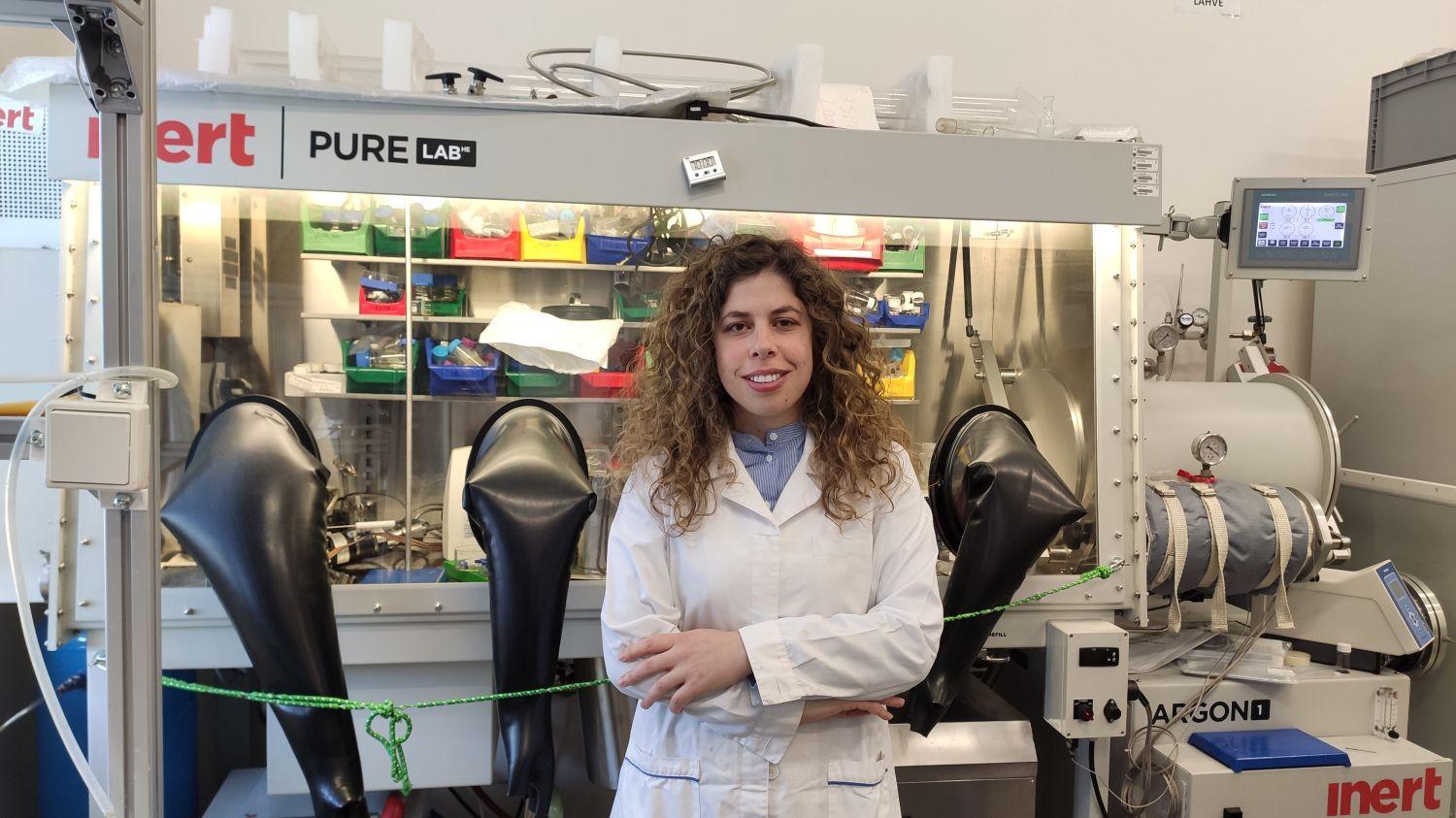
Filipa Oliveira explores new materials for electromagnetic shielding
Lightweight, flexible, and effective—this is the goal for a new generation of electromagnetic shielding materials developed by Dr. Filipa Oliveira in her GAČR-funded project. She focuses on 2D materials called MXenes, which may one day replace traditional metals in protecting electronics from disruptive radiation.
How would you describe your project in a few sentences to a layperson, and why is it important?
Imagine a materials scientist as a chef, creating new recipes for obtaining materials with specific properties. In our case, we aim to develop materials that block unwanted electromagnetic (EM) interference from electronic devices. These materials act as shields, protecting devices from interference, and typically, metals like iron and copper are used due to their electrical conductivity. However, we also want these shields to be lighter, more flexible, and corrosion-resistant, among other characteristics. Most importantly, if possible, we want to reduce the strong reflection of EM waves, which can cause even more EM pollution. We can achieve this by "cooking" (or synthesizing) materials with carefully tailored properties – in this project, these materials are MXenes, a class of 2D materials that offer many exciting possibilities. Next, these MXenes can be incorporated into a polymer matrix, giving the mechanical robustness to expand their application possibilities.
What inspired you to choose this topic? Was it a specific challenge you wanted to address, or more of a natural continuation of your previous work?
During my PhD, I studied the EM interference shielding properties of polymer composites. When I moved to the Czech Republic, I became very interested in the possibilities of 2D materials, particularly MXenes. Their versatility and numerous possible chemical combinations and applications attracted me. This project combines what I have learned about EMI shielding materials, the synthesis of MXenes, and their applications in polymer composites. I wanted to challenge myself to obtain MXenes with tailored properties that can be dispersed in a polymer matrix and still maintain their EMI shielding properties—which is tricky to achieve in polymer composites.
What is the main goal of your research?
The main goal of my research is to synthesize chlorine-terminated MXenes using specific Lewis acidics by molten salt etching. We then aim to integrate these MXenes into lightweight, flexible polymer composites that can effectively block EM interference.
What do you think captured the commities' attention the most?
I believe what captured the committee's attention most was the suggested approach of using lanthanide trichlorides (LnCl3) as Lewis acids. Cl-terminated MXenes synthesized through molten salts are still in the early stages of development, and using LnCl3 is not been explored and is a very accessible alternative for achieving controlled surface chemistry in MXenes. This approach is exciting because LnCl3 are readily available and commonly used in research, making it easier to implement this approach for future studies and industrial applications.
Will the project lead to any specific applications or technologies?
The materials we aim to obtain can be applied in various fields. For example, they could be used in electronics to shield devices from EM interference, in wearable technologies, or as protective coatings for medical and automotive devices. As our world becomes more connected through electronics, the need for efficient EM interference shielding solutions is growing, and our research aims to contribute to that demand.
What makes your project unique?
What distinguishes this project is the use of lanthanide trichlorides (LnCl3) as Lewis acids to synthesize MXenes, an approach not explored yet.
Who are you collaborating with on the project?
I am fortunate to say that I will collaborate with those who are already my colleagues at prof. Sofer group. They will support the project with morphological, structural, and chemical analyses. Following the earlier cooperation established during my Chemfells V fellowship with colleagues from RWTH Aachen University, Germany, there is good support for synthesis. For the polymer composites, a collaboration with Dr. Paulo Teixeira from CENTI, Portugal, is a plus for the project. As the project progresses, I am sure more collaborations will arise, which is always exciting.
What obstacles or challenges do you anticipate during the project's implementation? Do you already have a strategy to overcome them?
While we have had promising preliminary results with synthesizing Cl-terminated MXenes using the suggested Lewis acids, this is still an early-stage project, so I expect challenges related to synthesis and their optimization. Also, as it is my first project as a PI, transitioning from working within a team to leading a project is a learning curve. I will have to balance research, administrative tasks, and management, which can be tricky. Hiring and mentoring PhD and master's students will also be a new challenge, as each student has different interests, motivations, and ways of working – it will require adapting my approach to guide them effectively. But I am taking it step by step to overcome all challenges with time and teamwork.
What brings you the most joy in working on this project?
The most rewarding part of this project is the opportunity to create something that could have a real impact. It is exciting to explore new ways of synthesizing MXenes, which will contribute to the growing research in the field and potentially to their application in protecting electronic devices from the effects of EM interference. I also enjoy collaborating with talented colleagues and mentoring students—being part of such a dynamic team is excellent.
What should theoretically follow your research after the project is completed?
While MXenes were first synthesized in 2011, there is still much to explore in this field. I believe the results from this project will help expand the MXene research field from synthesis to application. I see this project with many possible directions for follow-up research—such as scaling up production and exploring more applications in electronics. It is an exciting field, and I am sure much more will come after this project!







